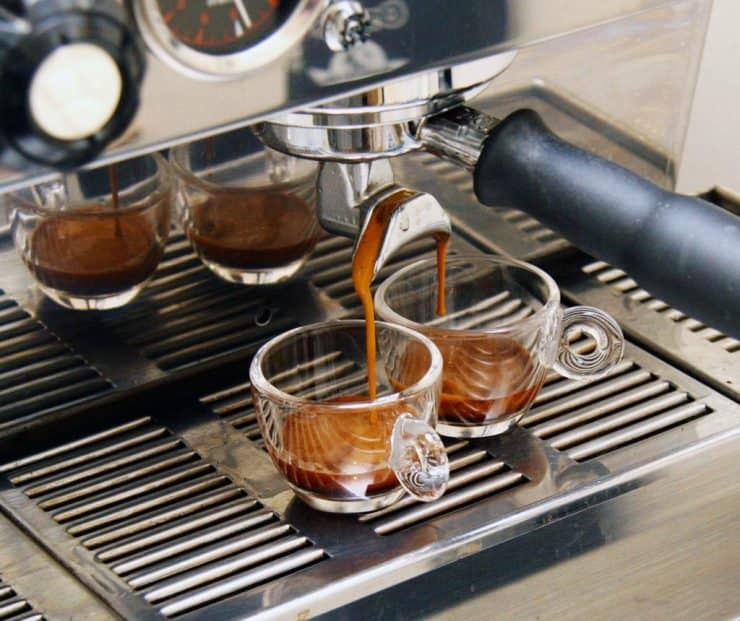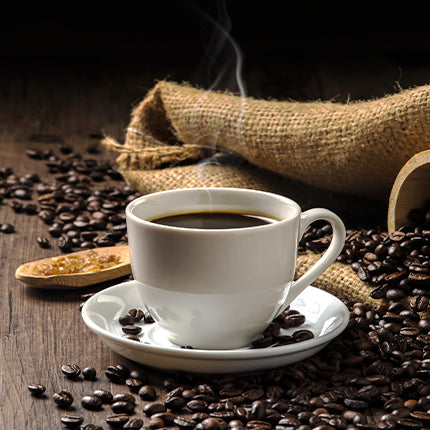The Influence of Different Coffee Brewing Methods on Taste and Aroma
Wiki Article
The Science Behind Coffee Developing: How Temperature and Time Affect Your Drink
Comprehending the scientific research behind coffee brewing discloses that temperature level and time are not mere variables but critical aspects that determine the beverage's taste profile and overall quality. The ideal developing temperature usually falls in between 195 ° F and 205 ° F, while the duration of extraction differs dramatically across various techniques. This interplay of aspects can lead to a cup that is either frustrating or wonderful. As we check out the subtleties of these elements, the question arises: how can one efficiently balance temperature and time to accomplish that ideal mixture?The Chemistry of Coffee Extraction
The chemistry of coffee removal explores the detailed procedures that transform raw coffee beans right into the fragrant drink delighted in worldwide. This makeover mainly includes the solubility of numerous compounds existing in the beans, which are influenced by factors such as grind size, water high quality, and the developing approach employed.During the brewing procedure, warm water serves as a solvent, drawing out soluble substances, consisting of high levels of caffeine, lipids, sugars, and acids, from the coffee premises. Each substance adds to the flavor account, aroma, and body of the final drink. For example, acids are accountable for appetizing and brilliant notes, while oils contribute to an abundant mouthfeel.
The removal process is not consistent; different compounds liquify at various rates. The initial phases of brewing extract acids and sugars, resulting in a pleasurable level of acidity, while extended removal can result in anger because of over-extraction of unwanted compounds. Comprehending these chemical communications is important for optimizing brewing strategies, as the balance in between removal time and water temperature level can significantly affect the total top quality of the coffee. Eventually, mastering the chemistry of coffee removal is crucial to achieving a all-around and tasty mug.
Ideal Developing Temperatures
Finding the best brewing temperature is crucial for opening the full capacity of coffee flavors and aromas - coffee brewing methods. Research study shows that the optimum variety for brewing coffee lies between 195 ° F to 205 ° F(90 ° C to 96 ° C) Within this array, the extraction process properly dissolves the desirable soluble compounds in coffee beans, leading to a well balanced and savory cupDeveloping at lower temperatures, such as listed below 195 ° F(90 ° C ), may cause under-extraction, generating an acidic and weak mixture with soft tastes. Alternatively, developing at temperatures surpassing 205 ° F(96 ° C) can bring about over-extraction, producing a bitter and severe preference due to the too much dissolution of undesirable compounds, such as tannins.
Furthermore, the perfect brewing temperature level can vary depending on the coffee bean kind and roast level. Lighter roasts usually profit from somewhat higher temperatures to improve their complex flavor profiles, while darker roasts may be better fit to reduced temperature levels to minimize anger.
Ultimately, maintaining accuracy in developing temperature levels is crucial for accomplishing an unified balance of flavors, making sure that every mug of coffee supplies basics an enjoyable sensory experience.
Effect of Brewing Time
Developing Related Site time plays a pivotal duty in identifying the flavor profile and overall high quality of coffee. Much shorter developing times can result in under-extraction, leading to a weak or sour flavor, as not sufficient soluble compounds are dissolved.Optimal developing time differs depending on the approach made use of and the grind dimension of the coffee. A French press typically requires concerning 4 mins, while coffee extraction is usually finished within 25 to 30 secs. It is vital to calibrate developing time in combination with other variables, such as water temperature and coffee-to-water ratio, to achieve the wanted flavor account.
Comprehending the effect of brewing time makes it possible for coffee enthusiasts to improve their brewing strategies, eventually boosting the sensory experience of their cup (coffee brewing methods). With mindful interest to this variable, one can open the complete capacity of the coffee, exposing its distinct characteristics and nuances
Brewing Techniques and Their Effects

As an example, methods like French press and cool brew permit a much longer steeping time, resulting in a fuller body and robust flavor because of increased extraction of oils and soluble solids. Alternatively, coffee brewing makes use of high pressure and a shorter extraction time, creating a concentrated shot that stresses intense tastes and an here are the findings abundant crema.
Pour-over methods, such as Chemex or V60, provide an even more regulated extraction process, permitting the brewer to control circulation rate and water distribution, which can boost illumination and clarity. Percolation methods cycle water through the coffee grounds numerous times, leading to a stronger, frequently bitter taste.
Finally, the usage of paper filters versus metal filters can likewise affect the last taste; paper filters usually produce a cleaner mug by trapping oils and great bits, while metal filters allow more oils to pass through, adding to a fuller mouthfeel - coffee brewing methods. Recognizing these subtleties can elevate the coffee experience substantially
Tips for Improving Your Brew
A well-executed mixture can change even the simplest coffee right into an exceptional experience. To attain this, attention to information is crucial. Begin with premium, newly roasted beans, as their flavor profile decreases gradually. Grind the beans right before making to optimize freshness, making certain the work size matches your brewing approach-- coarser for French press and finer for coffee.Water quality plays an important role; use filteringed system water totally free from pollutants. The optimal developing temperature level varies between 195 ° F and 205 ° F(90 ° C to 96 ° C ) Too warm can burn the coffee, while also great might under-extract tastes.
Timing is equally important. For immersion methods, soaking for 3 to five minutes is optimal, whereas drip methods normally take around five mins. Try out brew times to discover your preferred stamina.

Conclusion
In summary, the elaborate connection between temperature level and time is paramount in the coffee brewing process. Recognizing these scientific concepts empowers individuals to fine-tune their brewing techniques, ultimately leading to a more satisfying and balanced coffee experience.Understanding the scientific research behind coffee developing discloses that temperature level and time are not mere variables but critical elements that dictate the drink's flavor account and general high quality. Understanding these chemical interactions is crucial for optimizing developing strategies, as the balance in between extraction time and water temperature can considerably influence the total quality of the coffee.Developing time plays a crucial duty in establishing the flavor account and general top quality of coffee. By concentrating on these aspects-- bean top quality, grind size, water temperature, soaking time, and ratio-- you can elevate your coffee developing process, resulting in a regularly remarkable mug.
In summary, the detailed partnership between temperature and time is vital in the coffee developing process.
Report this wiki page